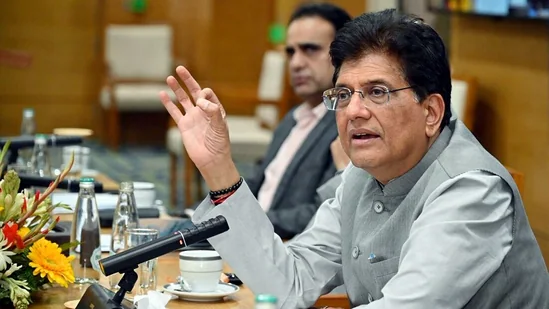Indian Railways Approves ₹1.9 Lakh Crore Worth of Projects in Four Years
- MGMMTeam

- Jul 24
- 3 min read
In a significant development showcasing the Modi government’s focus on infrastructure modernization, Indian Railways has sanctioned infrastructure projects worth a staggering ₹1.90 lakh crore over the last four years. Railway Minister Ashwini Vaishnaw revealed the data during a recent session of the Lok Sabha, citing the role of PM Gati Shakti in accelerating approvals and project execution.

Rapid Expansion of the Railway Network
Between the financial years 2022–23 and 2025–26, a total of 237 major projects were greenlit by Indian Railways. These include new railway lines, gauge conversion efforts, and doubling of tracks—covering a cumulative 9,703 kilometers. The approved projects reflect a renewed urgency to improve connectivity, decongest existing routes, and prepare India’s railway network for a growing economy and population.
Additionally, Indian Railways sanctioned 892 route surveys during the same period. These span over 61,462 kilometers and include feasibility studies for new lines, track doubling, and gauge conversions. Vaishnaw emphasized that the focus on timely surveys and strategic planning has enabled better execution and budgeting, reducing inefficiencies from the past.
From 4.2 to 8.57 Kilometers Per Day: A Quantum Shift
The pace of track-laying and project execution has almost doubled over the last decade. Between 2009 and 2014, only 7,599 kilometers of track were commissioned—an average of 4.2 kilometers per day. In comparison, the 2014–2025 period witnessed the commissioning of 34,428 kilometers, averaging about 8.57 kilometers daily.
Vaishnaw credited this progress to PM Gati Shakti, an integrated national master plan introduced in 2021. The platform allows real-time coordination among 16 ministries, streamlining approvals and cutting down delays associated with land acquisition, environment clearances, and project design.
National Projects and Regional Upliftment
Beyond macro figures, the sanctioned projects hold deep regional importance. In Assam, the second Saraighat Rail-cum-Road Bridge over the Brahmaputra has been cleared at an estimated cost of ₹1,474 crore. The bridge will link the Agthori and Kamakhya sections and is expected to be completed by 2029.
Meanwhile, the Cabinet Committee on Economic Affairs (CCEA) has approved major projects like the fourth lines on the Wardha–Ballarshah and Ratlam–Nagda routes at a combined cost of over ₹3,399 crore. These corridors are vital for decongesting freight movement and will serve nearly 20 lakh people in the surrounding regions.
In Jharkhand, a ₹344 crore project for a new 10.6-kilometer bypass line between Gundabihar and Chandil has been sanctioned, while states like Karnataka and Jharkhand will benefit from new doubling initiatives like the Koderma–Barkakana and Ballari–Chikjajur projects, approved at over ₹6,400 crore.
Passenger-Centric Modernization
Passenger experience is at the heart of Indian Railways' transformation. The Amrit Bharat Station Scheme, launched in 2023, is in the process of revamping more than 1,300 railway stations across the country. These upgrades aim to provide modern amenities, clean platforms, efficient ticketing systems, and enhanced accessibility.
The introduction of new-generation trains like Vande Bharat Express, Amrit Bharat Trains, and Namo Bharat Rapid Rail is redefining rail travel in India. Designed for speed, safety, and comfort, these trains reflect the government’s ambition to position Indian Railways as a world-class public transport system.
Another major leap in safety is the implementation of ‘Kavach,’ India’s indigenous Automatic Train Protection (ATP) system. With over 1,400 kilometers of routes and nearly 150 locomotives already covered, Kavach is being rolled out in a mission mode. Its goal is to prevent collisions, ensure automatic braking, and add redundancy to human error.
A Tech-Enabled, Green Future
Sustainability is now central to the Railways’ long-term vision. The ministry is pushing for 100% electrification of broad-gauge routes and has announced a net-zero carbon emissions target for 2030. The budget for modernization in FY 2024–25 alone was pegged at ₹1.92 lakh crore, with a focus on rolling stock upgrades, station redevelopment, renewable energy integration, and freight optimization.
The use of satellite data, GIS tools, and real-time dashboards under PM Gati Shakti has also allowed the Railways to become a key player in India’s integrated logistics ecosystem. Through dedicated freight corridors, multimodal terminals, and seamless integration with ports and highways, the Railways is reducing transport costs and supporting India’s ambition to become a global manufacturing hub.
Conclusion: A New Era on Track
The ₹1.90 lakh crore worth of projects sanctioned in the last four years mark a transformative phase for Indian Railways. With a clear shift toward faster execution, integrated planning, passenger focus, and sustainability, the Railways is no longer just a public utility—it is emerging as a backbone of India's economic and strategic vision.
As the Railways aligns itself with the broader goals of Atmanirbhar Bharat and Viksit Bharat 2047, these projects signal not just steel on tracks, but hope, connectivity, and opportunity for millions of Indians. The train of progress, it seems, is gathering unprecedented speed.
(Sources: NDTV, Daijiworld, Times of India)




Comments